MOTORING
Ford Fiesta 1.0 Titanium AT: Small car, big attitude
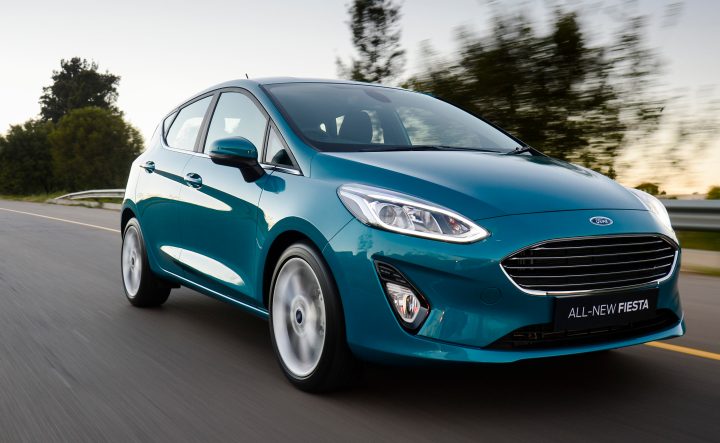
There was a time when small cars were basic and affordable by definition. Not any more: the demand for classier compacts has spawned a new generation of sophisticated junior hatchbacks. The latest Ford Fiesta is a case in point.
The Ford Fiesta has been the Blue Oval’s top seller around the world. On local shores, it’s one of the quintessential subcompact hatchbacks, crossing swords with the likes of the VW Polo, the Hyundai i20 and Kia Rio, Toyota’s Yaris, and a host of others.
The Fiesta built its reputation on nippy dynamics, clean cosmetics and a strong dose of value for money. For hot hatch fans, the Fiesta ST remains a firm favourite, even in pre-owned guise.
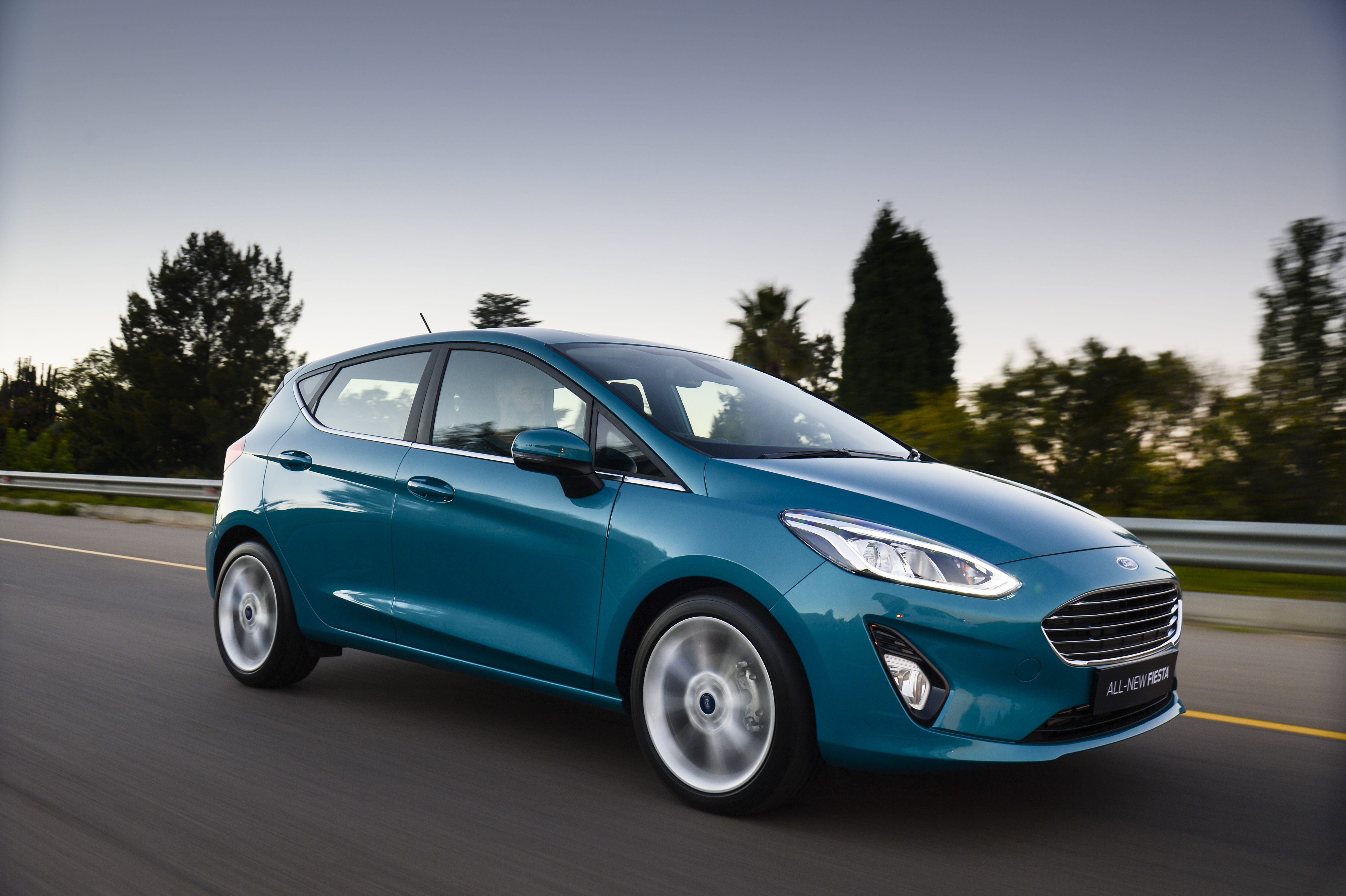
Launched in March, the all-new Fiesta is best described as a grown-up development of its predecessor.
The styling isn’t radically different and the identity remains unmistakably Fiesta, but the longer, wider body, broader tracks and (slightly) longer wheelbase allow for an aesthetic approach that’s more streamlined, and more elegant.
No doubt, the upcoming ST version will add some youthful pizzazz and extra dynamic fizz, but as tested here in top-flight Titanium Auto guise, with 17-inch alloys and finely executed detailing, the new Fiesta looks classy.
It’s lost some of its predecessors cheekiness in the process, but given that there’s a growing demand among more mature buyers for smaller cars that still offer a full-house list of luxuries, the Fiesta’s new-found sensibility is probably a good thing.
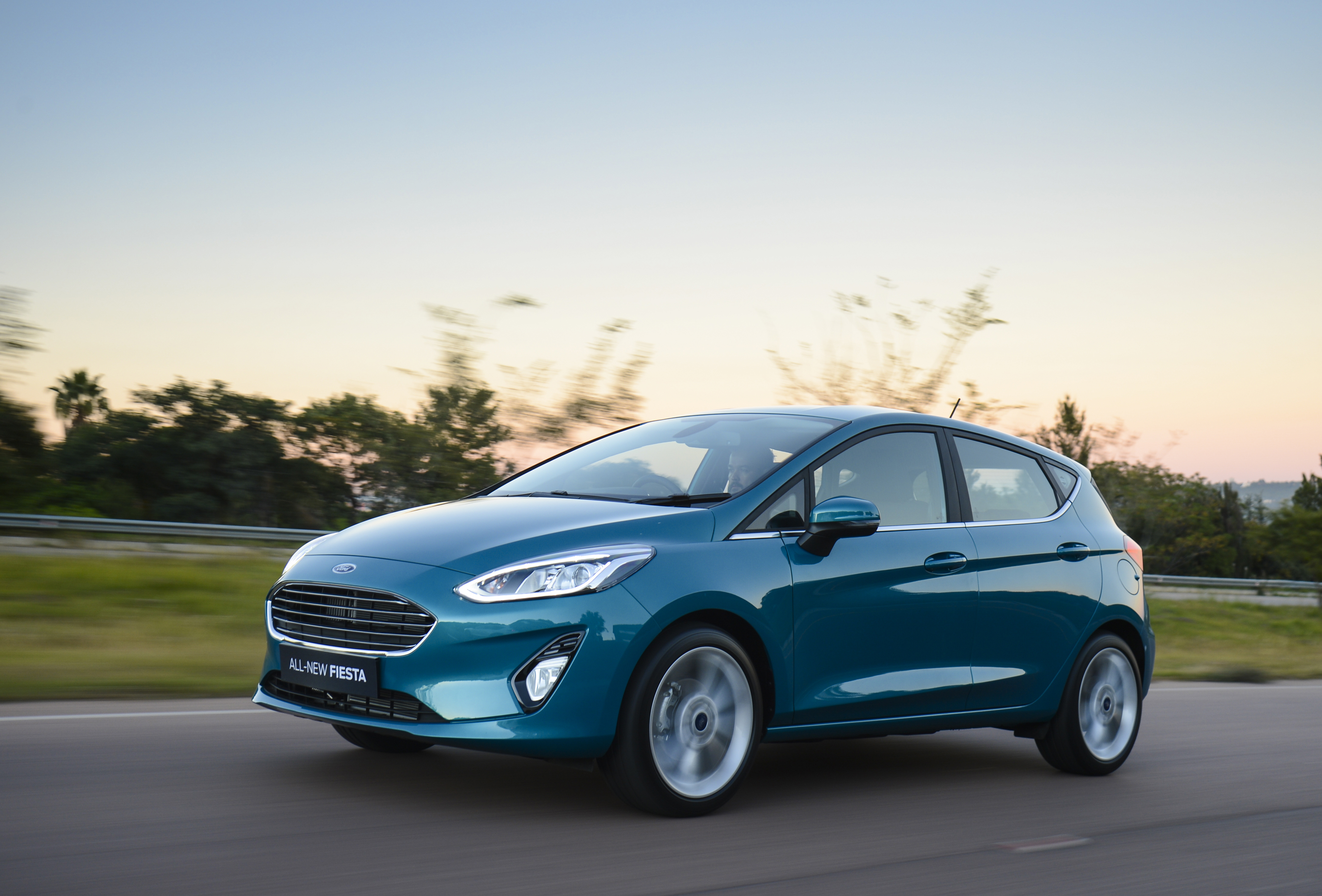
Slimmer headlights outlined by daytime running lights, a bolder chrome-framed grille, and recessed fog lamps on either side of the lower intake are key styling elements, as is the steeply raked windscreen.
The rear is chunkier, emphasising the Fiesta’s extra width. The tailgate opens wider too, creating improved access to a useful but unexpectedly deep, 303-litre boot. It means you need to deal with a high loading sill, though.
One of the new Fiesta’s high points is a cabin that oozes quality. An attractive mix of textures and materials creates a smart, durable impression.
The cloth seats have an upmarket feel, and the black gloss treatment of much of the fascia and centre stack adds a touch of sophistication. Even the dash plastics manage to look, and feel, the quality part.
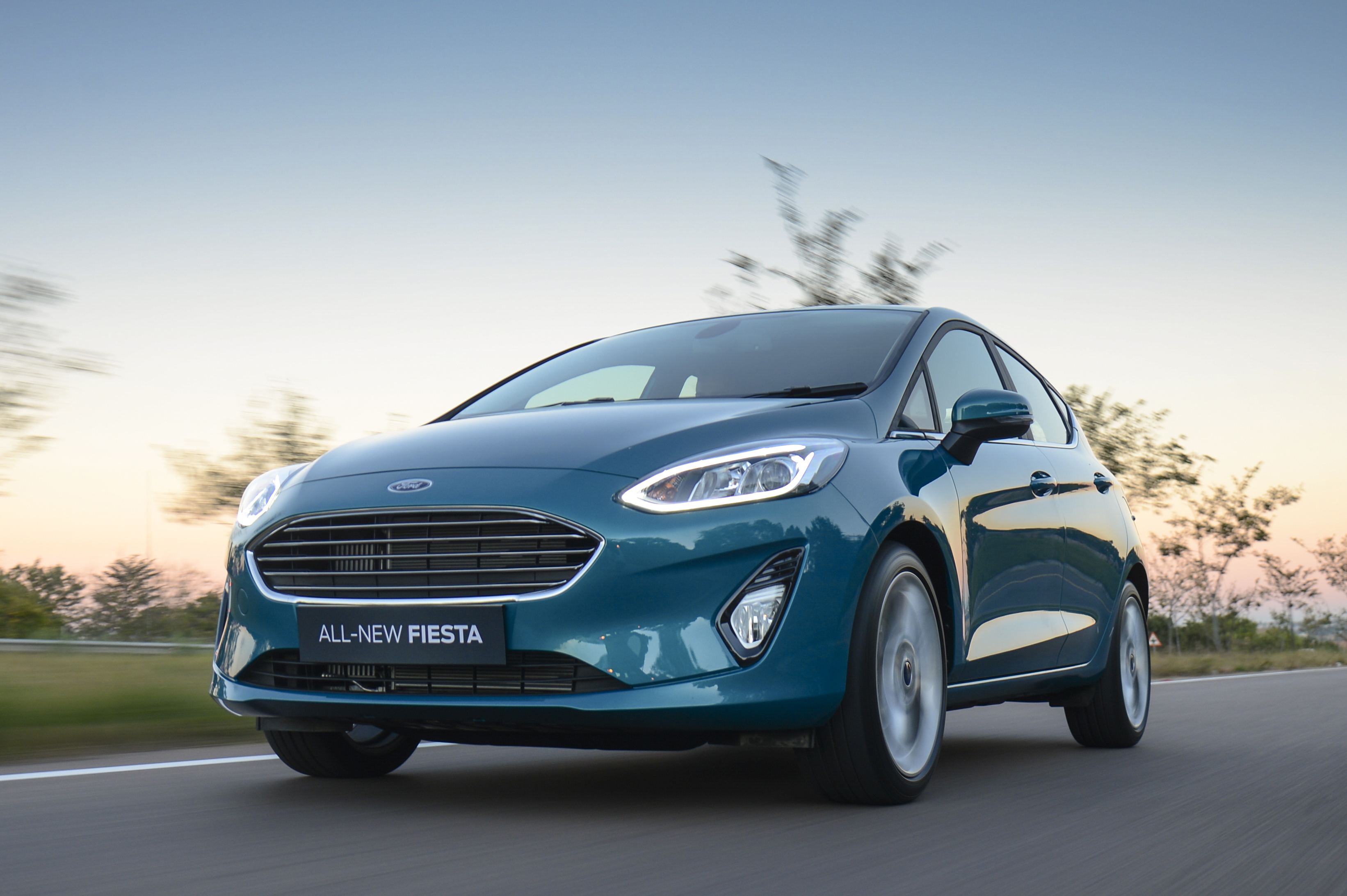
The Titanium AT is the Fiesta flagship, and as such it literally bristles with the kind of features usually associated with larger, fancier machinery. Perhaps most obvious is the generous touchscreen, prominently elevated above the centre stack.
In the relatively compact confines of the Fiesta cabin, that 21cm screen seems overbearing at first, but it’s always within easy reach, which makes it simple to use.
User-friendliness isn’t just limited to the touchscreen, though: compared to the flight deck-like inscrutability of the previous Fiesta’s control set, the newcomer offers much cleaner, more approachable ergonomics.
The view of the instrument binnacle, with its analogue dials and turquoise-tipped indicators is unobstructed, and the grippy steering wheel features multifunction controls, as well as gear shift paddles for manual changes. There’s enough seat and steering wheel adjustability to make most drivers feel comfortable.
Standard features extend from the touchscreen-driven SYNC III infotainment system’s Bluetooth and full-blown satnav, to seven-speaker hi-fi sound with aux and USB, and auto aircon.
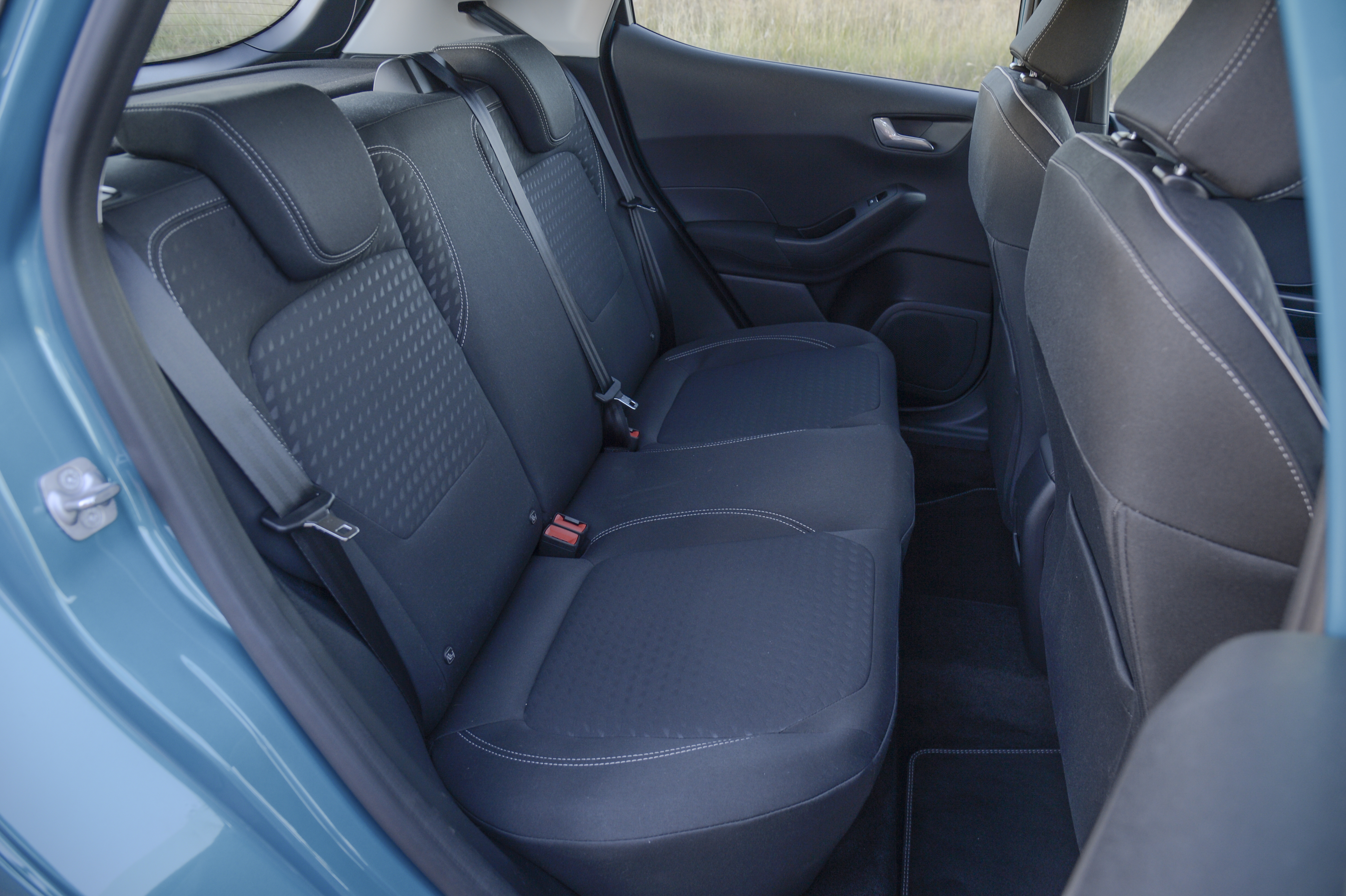
The inclusion of remote control with keyless entry adds more convenience, while electric windows and mirrors, a leather-trimmed multifunction steering wheel are also included. You even get heated seats.
The Fiesta doesn’t shirk its safety responsibilities, either. Dual front and curtain airbags are standard, as are ABS brakes with EBD and EBA, stability and traction control, and hill start assistance. In short, Ford has squeezed a lot of car into the Fiesta’s compact dimensions.
The newcomer’s extra length and improved packaging mean accommodation is roomier: 16mm extra knee room at the rear doesn’t sound like much, but it makes a significant difference in practice. There are lots of stowage spaces for cups, bottles and other odds and ends, too.
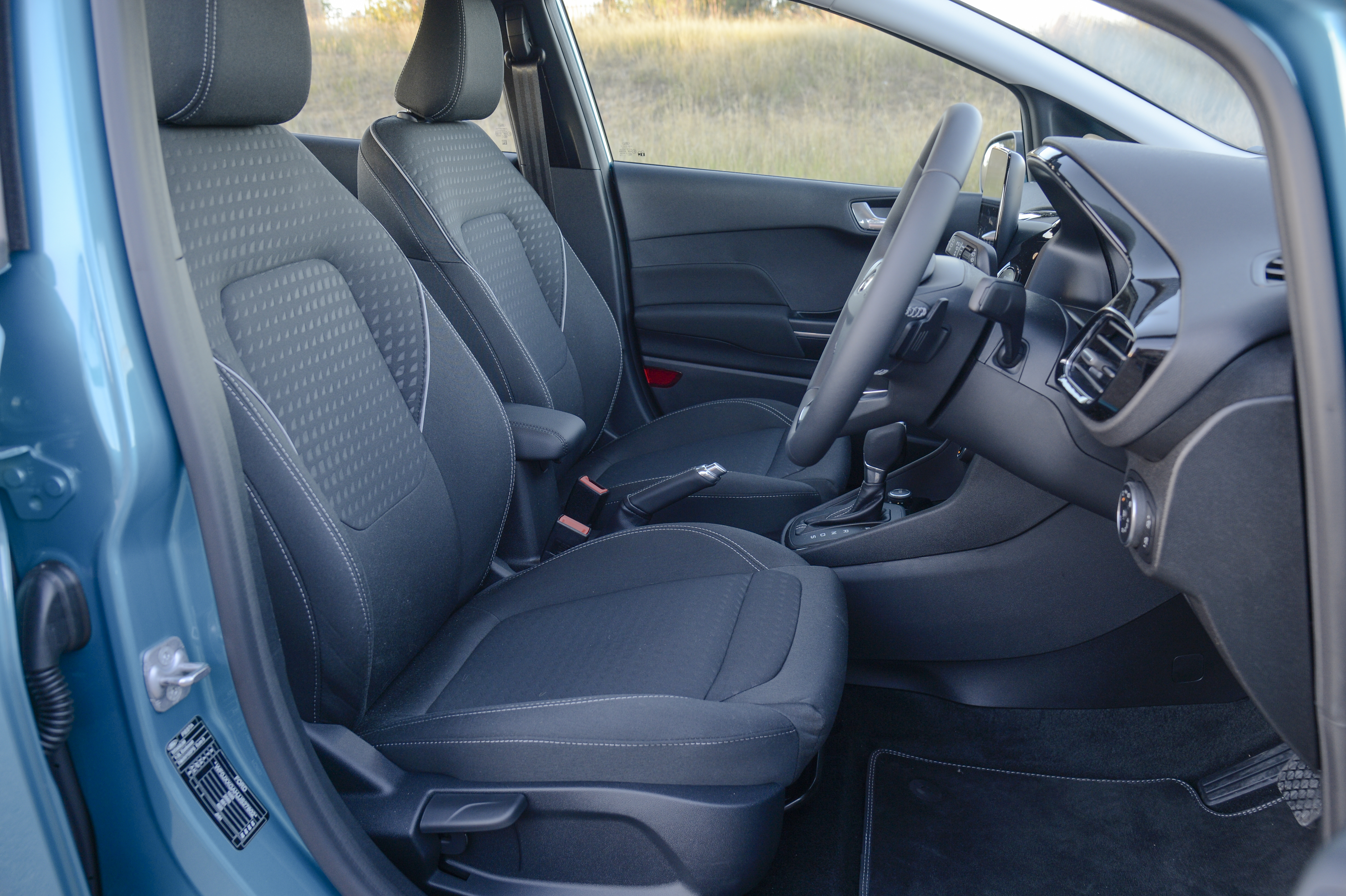
Settle behind the wheel, press the start button, and the appealingly gruff engine note so typical of three-cylinder power units provides the first indication of the little Fiesta’s dynamic intentions.
Carried over from the previous Fiesta, this is an eager little mill that offers more low-down shove than expected from its 997cc capacity.
Being turbocharged, plenty of torque is on offer from near-idling speeds, with the full 170Nm of twist already available at 1,500rpm and sustained to 4,000rpm. The power curve is peakier, but the 74kW of maximum muscle is reached at 4,500rpm and remains on song until 6,500rpm.
To be honest, there’s little reason to push the three-potter that high up the rev range, though: it’s at its best in band between 3,000 and 5,000rpm, where torque and power find a convivial rapport.
The peppy three-cylinder unit is coupled to a six-speed automatic gearbox. This is a conventional auto transmission, and not one of the new-fangled dual-clutch designs, which is why the shifts are relaxed, even in sport/manual mode.
However, the upside is a penchant for very smooth, almost unobtrusive transitions between gears. Linked to the engine’s torquey nature, the result is a transmission best left to its own devices – as tempting as those shift paddles are, manual shifts just aren’t incisive enough.
This new Fiesta feels nippy around town, using its low-down get up and go to sprint off the line with plenty of gusto. Tractability in the first three gears is gutsy, allowing the little hatch to make short work of urban traffic.
Hit the highway, and things become a little less frenetic, which is a good thing. The gear ratios are spread further apart from fourth to sixth, allowing more relaxed cruising. In fact, top gear is close to being an overdrive ratio, and to overtake at highway speeds, fifth needs to be called into action more often than not.
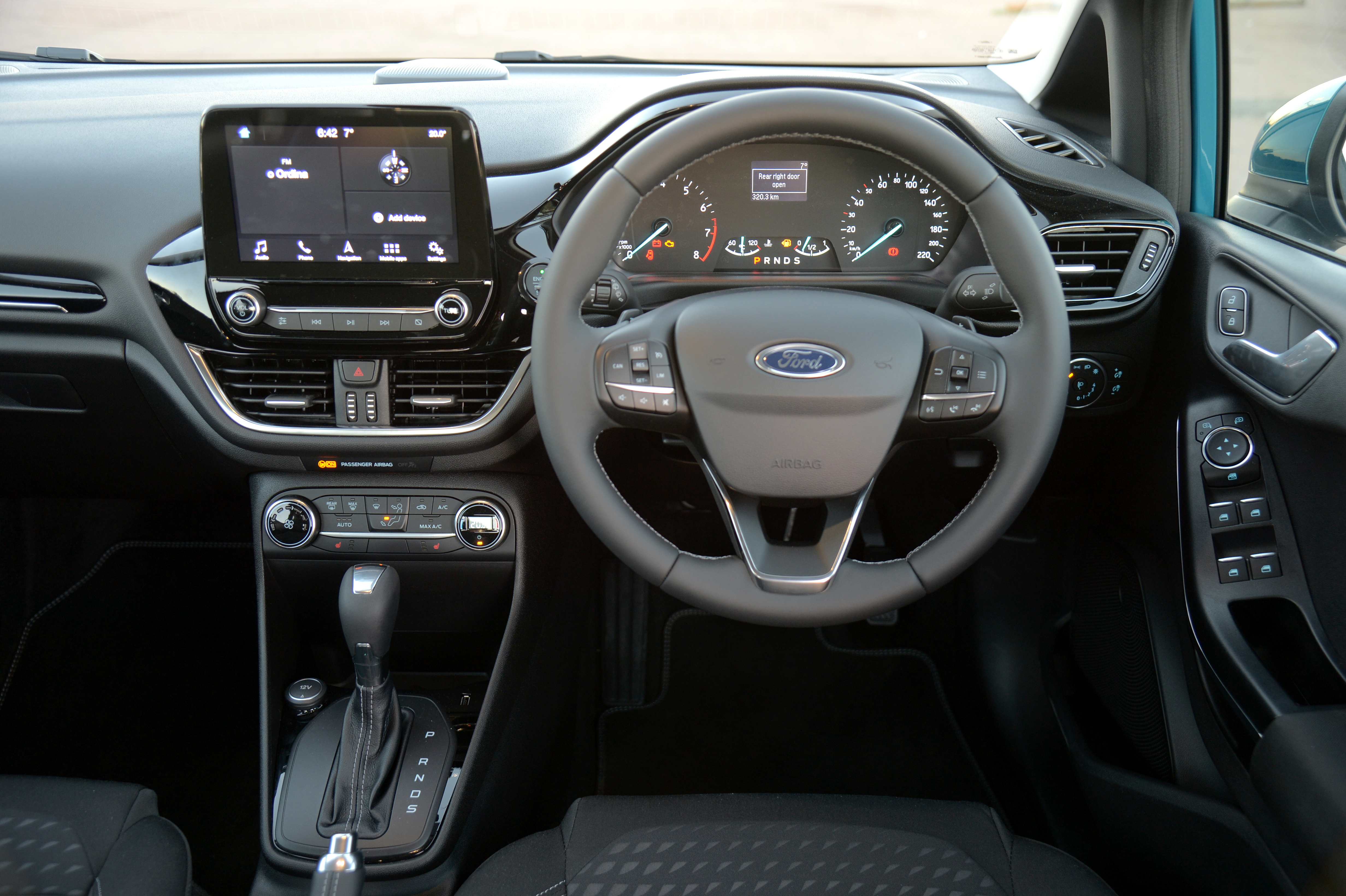
The auto box responds well to kick-down prompts in these situations, further strengthening the case for driving the Fiesta in auto mode, although it can be useful to intervene manually via those shift paddles, especially when overtaking on uphills.
The Fiesta’s on-road demeanour exudes a solidity that comes as a welcome surprise. In the quest for keeping kerb weights low and efficiency levels high, smaller cars can sometimes seem less robust, even if they’re decently assembled.
But the new Fiesta feels stout and planted, with no sign of any squeaks, creaks or rattles, even on poorer surfaces. That also bodes well for the car’s longevity, especially in a market where cars are often kept much longer than their warranty period.
Ride refinement is good, successfully treading the narrow path between too soft and too choppy, while offering good driver feedback. The steering responds keenly to input, and delivers crisp turn-in, ensuring wieldy cornering and easy in-town manoeuvrability.
It’s not exactly a driver’s car – petrolheads will have to wait for the ST – but this Fiesta’s charm lies in its overall competence, ease of use and comfort. The question is whether that’s enough to seal its sales success.
Yes, the new Fiesta is a significant step up from its predecessor. But subcompact hatchback buyers are spoilt for choice – and the Fiesta’s excellence and cutting-edge tech come at a price.
The flagship model breaks through the R300,000 barrier, making it the most expensive offering in this segment. Volkswagen’s top Polo model is the only other contender brave enough to carry a R300k-plus price tag.

Admittedly, you can opt for one of the more affordable Fiestas: the manual-gearbox Trend is almost R50k cheaper, and while it doesn’t have the Titanium’s full-house spec, it’s still well equipped. That should make it the volume seller in the range.
But with competition in this segment fierce, and price sensitivity a major factor, the Fiesta range will be under pressure: not only from its rivals, but due to a depressed economy currently favouring cheaper alternatives – including those in Ford’s own model line-up. DM
PROS
A lot of car in the compact hatch context. Ticks almost every box.
CONS
Expensive in a price-sensitive market and a closely contested segment.
VITAL STATS
| Fiesta 1.0 Titanium Auto | |
| Engine | In-line 3-cylinder, 998cc, turbo |
| Power | 74kW @ 4,500 – 6,500rpm |
| Torque | 170Nm @ 1,500 – 4,000rpm |
| Power-to-weight ratio | 61.35 kW/ton |
| Gearbox | Six-speed auto, FWD |
| Wheels/tyres | 17-inch alloy, 205/45 R17 tyres |
| 0-100 km/h | 12.2sec |
| Top speed | 180km/h |
| Fuel tank capacity | 42 litres |
| Consumption (claimed) | 5.2 litres/100km |
| Range (claimed) | 808km |
| CO2 emissions | 118 g/km |
| Retail price | R310,600 |


















 Become an Insider
Become an Insider